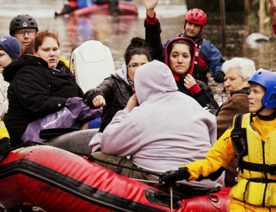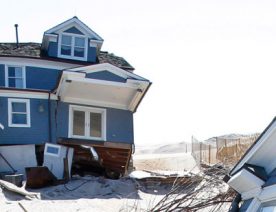
A new study, conducted by the Associated Press-NORC Center for Public Affairs Research, with funding from The Rockefeller Foundation, shows residents of twelve neighborhoods hit by Superstorm Sandy report generally high levels of recovery two years after the disaster. However, recovery is not universal as many people are living in communities where recovery has yet to happen, and some question whether it ever will. Social resources in a neighborhood are strongly associated with how residents view the resilience of their community, regardless of neighborhood socioeconomic status. Social resources can make neighborhoods with fewer financial resources more resilient, and an absence of social resources can make it more difficult for wealthier neighborhoods to recover from disasters.
With the frequency and severity of natural disasters on the rise, understanding and increasing community resilience has become a critically important issue for society. This study provides policy makers, emergency managers, and local leaders new data on how social resources contribute to neighborhood level resilience. The results imply that policy makers, emergency managers, and local leaders need to include social resources in their calculus as they build better policies, programs, and interventions to bolster community resilience. The study also raises important questions about how that might best be done and the role of different sectors including government, business, and non-profits, in fostering social connectedness.
The AP-NORC Center conducted a survey with 1,009 residents of the twelve neighborhood areas in New York and New Jersey affected by Superstorm Sandy, along with interviews, focus groups, and neighborhood observations.
Five things you should know from the AP-NORC Center’s study of residents living in twelve neighborhoods affected by Superstorm Sandy
- Two years after the storm, most neighborhoods are recovering, but nearly 30 percent of residents report their neighborhood has recovered only halfway or less.
- More help is needed. Less than half (43 percent) of residents say that most people have gotten most or all of the help they need to recover and restore their lives after the storm.
- Neighbors are cited most often as being helpful for the recovery. Nearly 7 in 10 say neighbors helped, compared to 57 percent who say the same for local government and 55 percent for federal government and FEMA.
- People living in neighborhoods with more social connections and resources are more resilient. They are more likely to say their neighborhood is well prepared to handle a disaster and more confident that their neighborhood would recover quickly after a disaster.
- These social resources can help neighborhoods overcome economic barriers to resilience. Indeed, the positive effects of social resources on resilience are relatively similar across socioeconomic groups.



